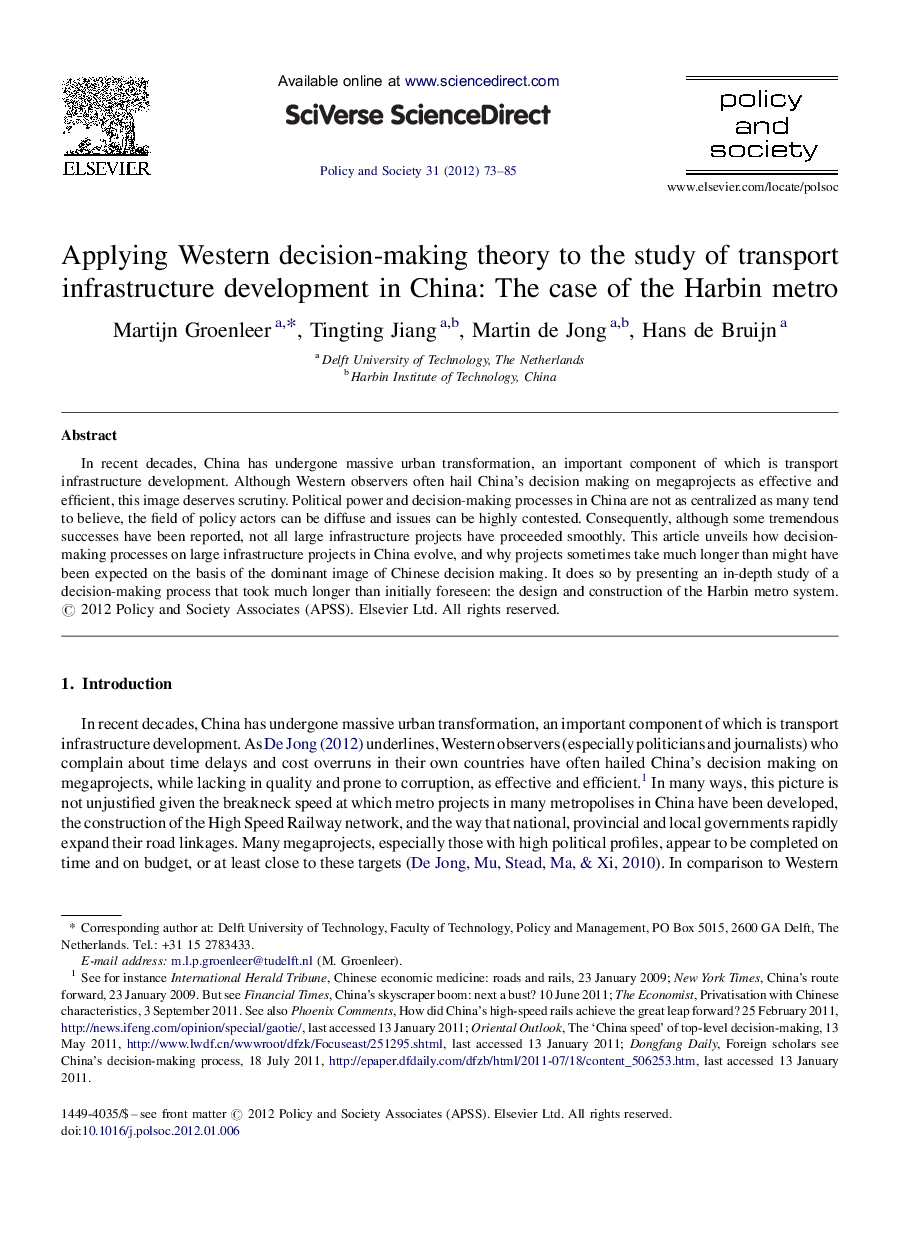| Article ID | Journal | Published Year | Pages | File Type |
|---|---|---|---|---|
| 1061597 | Policy and Society | 2012 | 13 Pages |
In recent decades, China has undergone massive urban transformation, an important component of which is transport infrastructure development. Although Western observers often hail China's decision making on megaprojects as effective and efficient, this image deserves scrutiny. Political power and decision-making processes in China are not as centralized as many tend to believe, the field of policy actors can be diffuse and issues can be highly contested. Consequently, although some tremendous successes have been reported, not all large infrastructure projects have proceeded smoothly. This article unveils how decision-making processes on large infrastructure projects in China evolve, and why projects sometimes take much longer than might have been expected on the basis of the dominant image of Chinese decision making. It does so by presenting an in-depth study of a decision-making process that took much longer than initially foreseen: the design and construction of the Harbin metro system.
